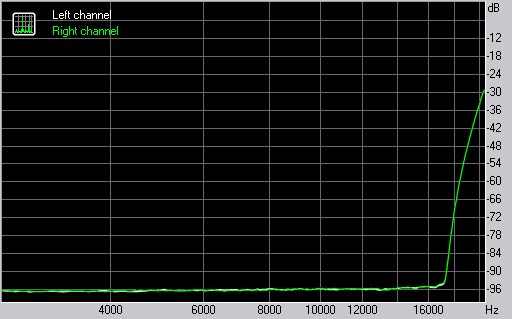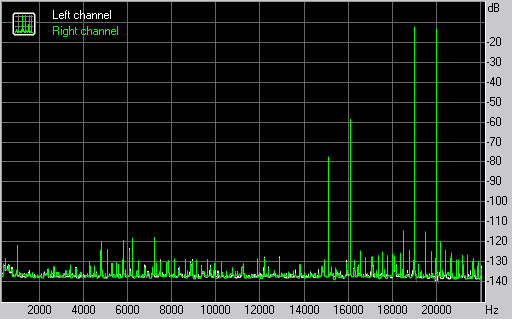 |
||
|
||
| ||
The ASUS Xonar D2 was officially presented in June 2007 at Computex 2007 in Taiwan. It's the first product in the new line of sound cards from ASUS. The company is going to launch a PCIe modification of the Xonar D2X sound card and Xonar U1 USB soon. There is a dedicated web site with a presentation of D2, D2X, U1 sound cards. ASUS Xonar D2 peculiarities:
 Labels on the box describe positioning of the sound card and bundled programs  You can see the LEDs through slits in the screen  Backlit minijacks and Coaxial/Toslink combo connectors enhance connectivity  The ASUS D2 sound card without the metal screen According to the manufacturer, this card turns any computer into a Home Entertainment Center. In other words, the card is designed mostly for playing audio files and sound tracks in movies. Nevertheless, the card has software EAX2.0 and full-size MIDI connectors on an additional bracket, as well as Ableton Live and SONAR LE in the bundle. The PCM1796 converter uses the Advanced Segment DAC architecture developed by Burr-Brown (TI) . What are key features of this DAC?  24-bit data at the input are divided into 6 upper and 18 lower bits. The former are converted into ICOB (inverted complementary offset binary) code. The remaining 18 bits with MSB go to the five-level delta-sigma modulator of the third order, which works with 64-bit oversampling by default. Level one of the modulator equals the least significant bit of the ICOB converter. The data are summed up into a 0-66-level digital code and go to DWA (data-weighted averaging) to reduce the mismatch noise. Then the data are converted into the analog form in the differential current DAC. The Advanced Segment DAC architecture overcomes various drawbacks of usual procedures used by multibit converters and provides an excellent dynamic range and jitter immunity. Specifications are really impressive: 123 dBA dynamic range, 0.0005% THD+N. These converters compete with flagship products from AKM and Cirrus Logic (which offer similar parameters) in price/quality. Interestingly, PCM1796 is recommended as a replacement for discontinued PCM1738 (117 dB, 0,0004%), which are installed in the consumer Pioneer 757Ai DVD-A/SACD player. We shall not miss the chance to compare DVD-Audio quality provided by the sound card under review and the representative of consumer electronics. The ASUS Xonar D2 card was designed in informational cooperation with the RMAA team. The box with the card shows a screenshot of RMAA 6. The bundled CD includes the program. Besides, ASUS employees wrote a detailed manual about measurements in RMAA with typical results. We found out in the process of this work that the ASUS D2 with its early drivers did not support 24 bit with MME interface. We shall not go into details, but the problem exists because of problems in Windows audio interface, where you should take special steps to avoid conversion into 16 bit. We refused to comply with a strange request from ASUS to remove MME from our RMAA test, and we advised to improve the drivers instead. So the developers had to implement 24 bit completely. We tested the latest drivers and made sure that all interfaces operated in 24 bit mode with them. Thus, on one hand, RMAA shows really high parameters of the card. On the other hand, it does not let engineers relax. Creative initially used the sterling 24 bit mode only in DirectSound and ASIO in its gaming cards, explaining that the MME interface was not necessary. But now 24 bit MME is also supported. ASUS apparently fights Creative with the same marketing weapon - high SNR. Measured in the standard de factor, Audio Precision, the ASUS D2 demonstrates 118 dBA, while the Creative Elite Pro offers 116 dBA. In fact, SNR values above -100 dBA do not make practical sense. Such values are lower than quantization noise power of a 16 bit signal with TPDF (Triangular Probability Density Function). As no one has complained about noises in AudioCDs yet, high SNR for audio playback is overkill. But on the other hand, high SNR is an indirect sign of high quality of the product. Mediocre converters demonstrate low SNR, which is caused by simplified circuitry and bad quality of converter elements. Thus, SNR together with other objective quality parameters (especially distortions) raise chances to get a good audio product, to say nothing of ways to control design mistakes and compromises. The screen on this card leaves a lot of questions. The problem with electromagnetic pickups inside a system unit are certainly exaggerated. Spectrum analysis in different computer configurations shows deterioration of results because of power interferences and grounding problems. Here is the proof - most professional cards can demonstrate the highest characteristics without any screens, and the Xonar D2 does not change its characteristics without its screen. Another oddity - the screen is covered with paint that does not conduct current. The paint apparently spells the death of the whole idea in places of contact with the ground. Our measurements show that the screen on our card is miraculously grounded. A close examination shows that the contact is ensured by screws that cut into the screen. But the situation is aggravated by paint on the screws, which does not let vibration unscrew them - so the screens on some cards may be ungrounded. Here is our advice to future owners of this card - you can remove the screen or scrape the paint off, where the grounding copper plates on the PCB touch the screen. Thus, the screen on the Xonar D2 has a symbolic value - it makes users feel safer, those who have no idea of the true physics here. There is at least one negative effect from using this screen - elements on the PCB get noticeably hotter, which raises intrinsic noises. This correlation is apparent, it's reflected in specifications of the converters.  Xonar D2 Audio Center Control Panel with processing modes toggles ASIO diagnosticsDevice: ASUS Xonar D2 ASIO Features: RMAA 6 measurements16 bit 44 kHz
Detailed report on tests in 16 bit 44 kHz mode 24 bit 44 kHz
Detailed report on tests in 24 bit 44 kHz mode We can compliment the card for similar results in the ALT mode (internal transfer from DAC to ADC) vs. tests via an external cable. Dynamic range is very high in both cases, over 116 dBA! It confirms the high value in specifications (about 118 dBA) for input and output separately. X-Fi Elite Pro demonstrates over 114 dBA in the same conditions, which again corroborates to 116 dBA mentioned in specifications.  An increase in intermodulation distortions at frequencies close to Fs/2 can be explained by penetration of a signal, which is not filtered in the mirror image suppression frequency band. You can see it, if you run CCIF IMD test instead of SMPTE, which is used in RMAA by default. There is a problem only at 17 kHz, which is not dangerous for the signal. Signal power at such frequencies is much lower in real sound tracks than in the synthetic test. Fortunately, this peculiarity is inaudible. 
 Intermodulation Distortion Test (CCIF, sin tones at 19 kHz and 20 kHz, -12 dB amplitude). There is a peculiarity only in the 44 kHz mode at the analog output. 24 bit 48 kHz
Detailed report on tests in 24 bit 48 kHz mode I don't understand the difference in SNR between the 44 kHz and 48 kHz modes, 107.4 dB versus 116.5 dB. This peculiarity is also confirmed by ASUS results of RMAA tests. This difference does not exist in the digital S/PDIF interface, so it cannot be explained with software processing. Audio quality comparison: Asus Xonar D2 vs. Creative X-Fi Elite ProWe had no doubts that the Asus Xonar D2 would outscore Mid- and Low-End cards, so we decided to compare it with the top card from Creative - X-Fi Elite Pro, equipped with the flagship Cirrus Logic converter on board. We ran the tests according to our streamlined test procedure, which took much time. We understand our responsibility for published test results, so we took all possible measures to avoid mistakes, including double tests and multiple verifications. Tested cards were plugged to a passive switching center, which was used to adjust volume levels with a twin control. Then the signal went through a professional cable to ADAM S2.5A monitors. We compared audio quality by switching between the cards instantly. Both cards demonstrate the highest audio quality, it's very difficult to choose the best card. We haven't heard any differences in some test fragments. Others demonstrated a hardly noticeable difference in playback personality. The X-Fi demonstrates a tad more distinct attack, while the Xonar D2 provides a tad wider stereo base. I repeat, the differences are so measly that we had to switch between the devices many times to hear them. It's even more difficult to understand which card sounds closer to the original. However, this situation is typical of modern High-End devices - it's very hard to hear the difference even with a high quality audio section. Manufacturers of popular devices have come close to reaching full potential of High-End converters. So you cannot expect a break-through in this field - the quality margin of audio components is disappearing. On the other hand, we can certainly recommend such cards as Xonar D2 and X-Fi Elite Pro for owners of high quality audio equipment, to say nothing of top active speakers. ConclusionsASUS has come to the market of sound cards. The right stake on high quality converters and well thought-out circuitry yield an excellent result. You can see it in RMAA measurements and you can hear it, as you listen to music. The lack of advanced audio DSPs forced engineers to use a modern but simple on-board processor. It's partially compensated by the drivers that offer various processing algorithms based on Dolby and DTS as well as a proprietary 3D sound mode with EAX2.0. Hardcore gamers will still use Creative products. If we speak about prices, $200 for a sound card with such features is an adequate cost. Creative X-Fi Elite Pro is 1.5 times as expensive. Perhaps, the PCIe modification, Xonar D2X, will be even more competitive, because there are very few sound cards for the new advanced PCIe bus. Pros:
Cons:
The ASUS Xonar D2 gets our Original Design award.  Maxim Liadov (maxim@ixbt.com)
February 12, 2008 Write a comment below. No registration needed!
|
Platform · Video · Multimedia · Mobile · Other || About us & Privacy policy · Twitter · Facebook Copyright © Byrds Research & Publishing, Ltd., 1997–2011. All rights reserved. |